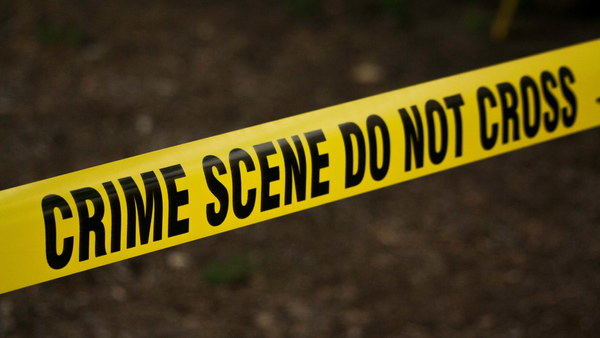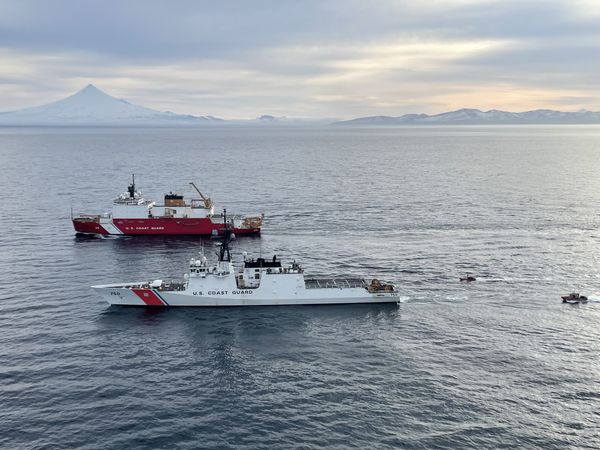
In 1970, Philip Guston, who was the most quietly painterly of the generation of abstract American artists known as the abstract expressionists, revealed a new body of work at Marlborough Gallery in New York. Instead of the aggregations of clumpy brushwork, the atmospheric jumbles and close-toned indeterminacies of the works that had made his name over the previous two decades, here, suddenly, were cartoonish depictions of pointy-hatted Ku Klux Klansmen, going about their business of idiot evil. They ruminate in their rooms, drive around looking for trouble, paint and smoke in a world as clunky and cartoonish as they are. All Guston’s skills were pressed into a new and parodic purpose.
This cartoonish, figurative late style shocked the art world and alienated the artist from many of his friends. The new paintings were derided, called “as simple-minded as the bigotry they denounce”, and Guston was labelled “a mandarin pretending to be a stumblebum”. The pile-on was horrible. At the opening, only Willem de Kooning told Guston he was envious. “It’s about freedom,” De Kooning said.

When I first saw illustrations of this work a year or so later at art school (news travelled slow pre-internet), I was elated. It was a shot in the arm – and chimed with the west coast underground comics I then devoured, presenting a break with a kind of abstract painting that I did not at that time entirely appreciate. Guston’s new work represented a seismic shift in terms of what painting could do or be. It wasn’t pop art (which Guston hated) and it wasn’t expressionism either, abstract or otherwise.
That this later work might still shock today became very clear when a major travelling retrospective that should have been here in 2021 was postponed following the murder of George Floyd in Minneapolis in 2020. Museums in the US, and Tate in the UK, announced a four-year delay in presenting the show. Following an open letter signed by leading artists, critics and curators, many of them Black, all protesting that the museums were underestimating their audiences, the lengthy delay was shortened. As the show travelled around the US, accompanied by trigger warnings, the expected protests did not materialise, and Guston has now finally landed at Tate Modern in London.

More than 50 years after their first appearance, Guston’s klansmen and cartoonish violences are better known now than the canonical abstract art that made his name in the 1950s and 60s, and we are now inclined to read his progress backwards, even in an exhibition so rigorously chronological. Looking at his abstractions now, you wonder how anyone could have missed the human heads, the skulls and incomplete torsos, the fleeting beings leaning towards one another to conspire? With titles such as Painter, Smoker, The Evidence or The Native’s Return, this is more than wishful thinking. Among their clumpy strokes, brush-swipings and twists of the brush, their homeless toiling lines and their multiple obliterations, bodies and beings are always on the verge of coalescing from the beautiful muck of Guston’s toiled-over surfaces. There are heads here. Now you see them, now you don’t.
It is impossible not to look at Guston’s progress except in the light of what came later; impossible not to see how his earliest preoccupations fed his later work; impossible not to reread even his most abstract work, and to open it up. This is one of the thrills of this great exhibition, in which the clues to his intentions, politics and relations with the world are everywhere.
He was born Philip Goldstein in Montreal in 1913, his parents having married in Dnipro, southern Ukraine. Escaping pogroms and persecution, they left with their extended family and by 1922 had settled in Los Angeles. Guston – who changed his name in 1935, concerned that his fiancee Musa’s parents might not accept a Jewish boyfriend – developed great skill as an illustrator, having strip cartoons accepted for the children’s section of the LA Times. He befriended Jackson Pollock at high school. Early paintings are an ambitious mish-mash of early Renaissance architecture, Giorgio de Chirico’s haunted city squares, rooms and mannequin figures. Guston tries mannerism, Picasso, and a kind of social realism. He makes strained and ambitious attempts to come to grips with surrealism.
In the 1930s, learning his craft while working as a muralist for the Federal Arts Project in New York, Guston was sent around the US on commission, creating frescoes in sanatoriums and housing projects, and going on to make illustrations and drawings for Navy training schools. This, and meeting other young artists on the project, was Guston’s great learning curve as a painter.

In 1935 he travelled to Mexico with two friends to complete their first mural commission at what is now the Universidad de San Nicolas in Morelia, under the tutelage of Mexican muralists David Siqueiros and Diego Rivera. Footage of this commission is projected on the Tate gallery wall. Called The Struggle Against Terrorism, it combines scenes of torture and suffering, and features the Spanish Inquisition and the Ku Klux Klan.
Guston went on to paint the bombing of Guernica, and in 1945 he portrayed children playing amid what seems a backdrop of war, with bandaged columns, spires and factory walls. Wearing masks, paper crowns and paper-bag hats, they play and sit among rubbish and splintered detritus.
Looking back at Guston’s early work, the Klan is always somewhere close. In the late 1960s, he ruminated: “What kind of man am I, sitting at home ... going into frustrated fury about everything then going into my studio to adjust a red to a blue?” The Klan may have lost out to other competing hate groups but the mindset never went away. “I almost tried to imagine that I was living with the Klan,” he said. “What would it be like to be evil? To plan and plot.”

He painted the Klan as if he were method-acting their moves. He painted himself as a Klansman painter doing a self-portrait. He painted them as regular Joes, puffing cigars through their hoods. He painted their heads as if they were tombstones. He made them objects of ridicule, reduced to a recurring motif, like a virus that’s everywhere. Part of the furore surrounding that later work is no doubt due to the fact that, while the white hood has arguably been replaced by the Maga cap and all the impedimenta of the alt-right, stupidity, bigotry and a penchant for violence are always with us, and white supremacy is on the rise again.
Guston’s later paintings are filled with stuff, things near to hand and things remembered. The ever-present cigarette, the bulging eyeball, the steaming kettle. His paintbrushes are nasty implements that he takes to bed with him. Half-squelched tubes of paint are like animals squeezed or trodden underfoot. He painted walls of canvases thick as a paving slab and hung from a nail like in a cartoon. He painted clenched fists, severed feet and clocks that tell you time is running out, as well as a whole lexicon of stupid objects becoming flotsam on a moiling sea.
Here’s a gigantic bottle of booze and a knocked-over glass. Feet dive for the cellar as more shoes pile up around the painter’s bed and he gives them a rheumy eye as he lies there smoking and eating a plate of fries bloodied with ketchup. A kettle steams in the dark and a black fire burns and a hand holds two cigarettes, smoke trailing as it gesticulates.

There is so much that is memorable and indigestible in Guston’s later art. Underlying it all, a deceptively beautiful line and graphic sense divides, cancels and invents a world. Lines hurry across the sky like clouds. They delineate words on a page and the eye-holes in a mask. Everything and nothing, they’re windows and they’re tightropes and they’re the stitching on a Klansman’s outfit. They’re electric flex and picture wire and sometimes they end in a noose.
His crude and lumpen objects are sometimes rendered with great tenderness and delicacy. Some things keep returning: the bare bulb and the dangling light-pull, the green windowblind with its ringed cord, lowered against the day. Sometimes a cord drops from nowhere into an entirely unrelated painting, to indicate that the whole image might be eclipsed and hidden from view. This is a five-star show that could be even better. I just want more.
• Philip Guston is at Tate Modern, London, 5 October to 25 February







